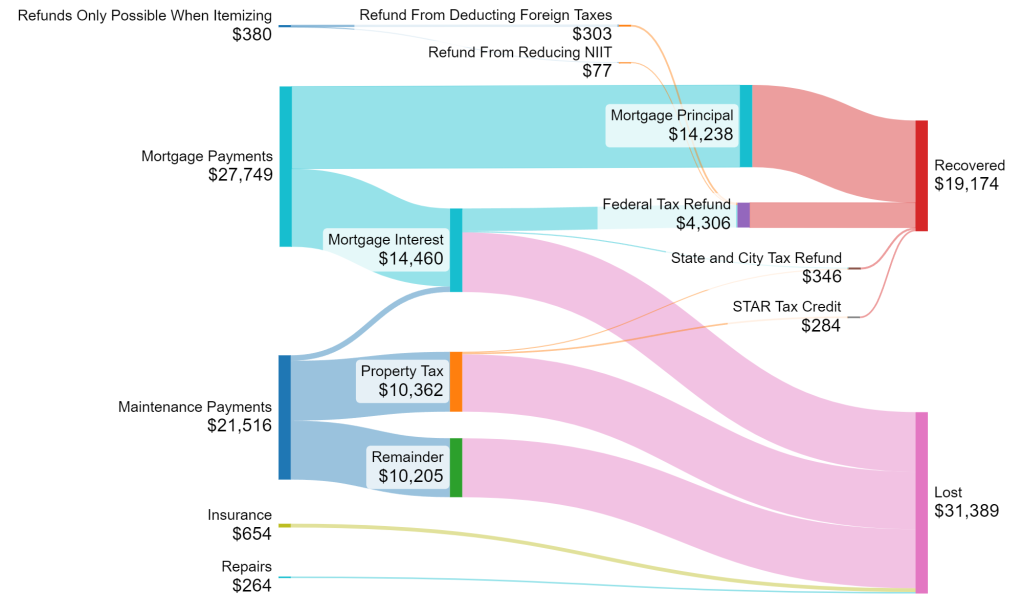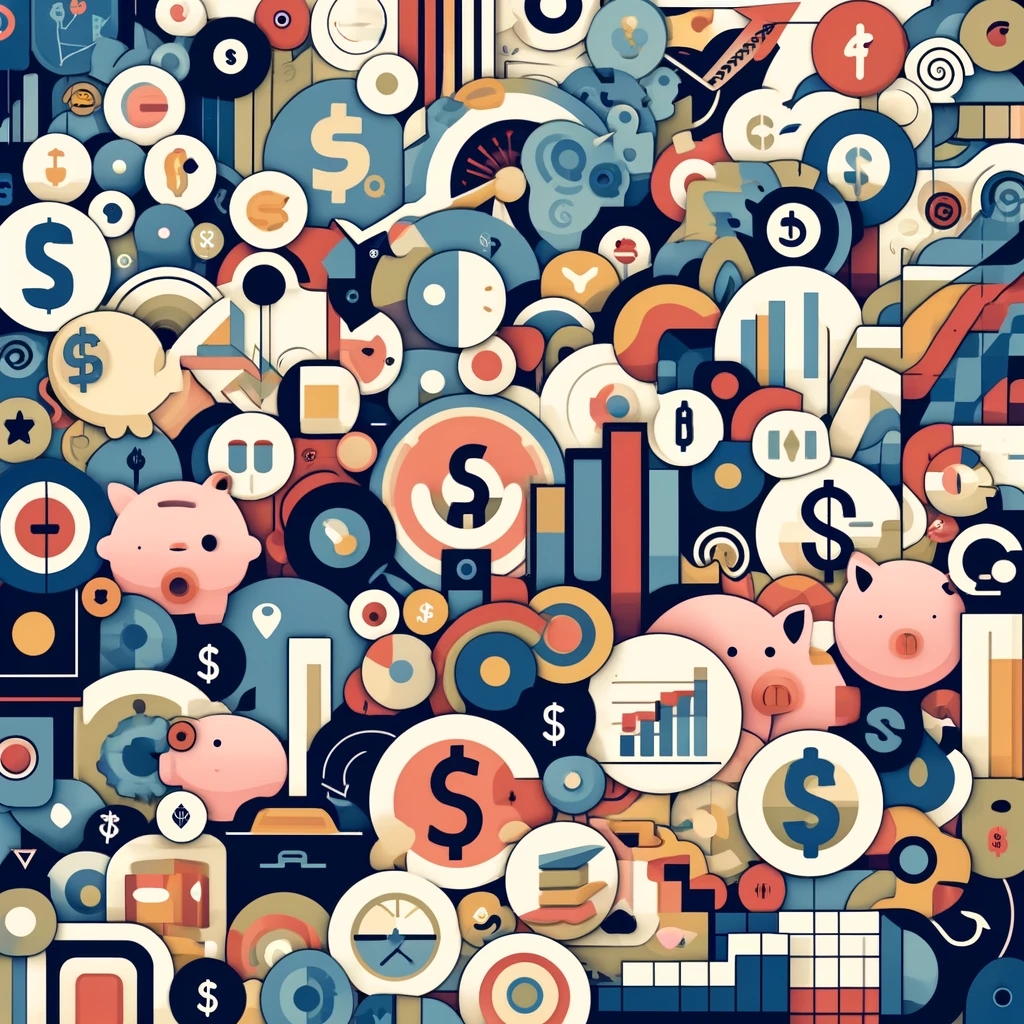tl;dr
- Emergency funds are a commonly recommended financial tool, and they’re generally a good idea for most people
- Emergency funds do come with an opportunity cost; I calculated I paid a $1,152 opportunity cost over 2 years with my initial emergency fund setup, by having an emergency fund in CDs vs just investing in the S&P 500. The cost only compounds over the longer term.
- Nowadays, instead of an emergency fund, I keep all my money invested and rely on my access to credit for emergencies. For short term, smaller expenses, I would just use my credit cards. For larger and longer term expenses, I would use my Pledged Asset Line (PAL) that lets me borrow money against my stock portfolio.
The case for emergency funds
Guide’s such as Reddit’s r/personalfinance wiki will recommend setting up an emergency fund as the first step of getting your finances in order. Emergency funds are generally pitched as useful in two main scenarios:
- Sudden, urgent, and unexpected expenses: Emergency travel, broken appliances, and medical expenses are just some of many examples of unexpected expenses that can come up with no notice and cost thousands of dollars. These expenses may also require money to be produced on very short notice (hours to days).
- Loss of income: For most people, a job is their main source of income, and that income could potentially go away at any moment with no notice. The need for money after a layoff isn’t as immediate as expenses in the first category, but you will need a way to cover regular expenses for until you can find a new job, which could take many months.
The idea of an emergency fund is to have enough money stashed somewhere to cover either of the above scenarios. “Enough” is usually defined as 3-6 months of expenses, but some people go as high as a 12 months. “Somewhere” is usually recommended to be a liquid (ie. easy to withdraw quickly) and safe (ie. FDIC insured, or an investment vehicle unlikely to lose value) locations. Liquidity is important so that you can quickly withdraw cash when you suddenly need it. Safety is important, because some events that trigger the need for emergency funds (eg. layoffs) are likely to occur at the same time as a major market turmoil that can cause riskier investments like stocks to lose value. The most common suggestion is to hold an emergency fund in a checking / savings account, but some people get a bit fancier with CDs and I Bonds1.
The cost of emergency funds
Having an emergency fund incurs an opportunity cost. Ideally the funds are stored somewhere with a non-zero return, but returns and risk tend to be inversely correlated, and the whole point is to store emergency funds in a safe location.
For example, I had a $6,000 emergency fund at Ally bank from August 2017 to August 2019. I earned a 1.65%2 rate in a CD, working out to about $198 in returns on that money. If I had instead invested that money in the S&P 500, that same $6,000 would have turned into $7,350 with dividend reinvestment (according to this calculator). The difference works out to a $1,152 opportunity cost3 for those two years of having an emergency fund.
Concrete examples are helpful, but for any given few-year span you could actually end up ahead or behind based on market swings. Over the long term, however, investing money in the stock market has historically come out ahead. For example, the highest CD return we’ve seen in the last 30 years is ~6.5% (with an average that looks to be in the 2-3% range) vs the S&P 500 has averaged 10% annualized in the same time period (again, using this calculator).
What I do instead of an emergency fund
Let me preface this by saying:
Having an emergency fund is the right choice for many people, however, this blog is written targeting a particular subset of people like me for whom an emergency fund might not make sense.
I used to have an emergency fund myself. Over time, however, I gained more access to sources of credit and a better appreciation of the opportunity cost of my emergency fund. I began looking at alternatives by asking: How can I access funds during an emergency, if I don’t have them already set aside in a checking account?
My answer varies by the scenario:
Unexpected Expenses
For any expense I need to pay today, I’d opt to put it on a credit card if I could. For expenses that don’t take credit cards, I’d use the float in my checking account (if I have enough cash there) and I’d write a check from my Pledged Asset Line4 (PAL – described below) otherwise.
Credit Cards
I’ve got a few credit cards with limits above $10k, and technically some of my Amex cards have no limit5, so I expect I could put most unexpected expenses onto one of these cards. If the expense was higher in the five figure range, I could combine my limits across a few cards with a phone call (this is a trick I used to get a $43,000 limit when I bought my apartment)6.
Credit cards tend to have insanely high interest rates once you carry a balance from statement to statement, but until the interest starts posting they’re actually an interest free loan (not to mention you even earn points from the purchase!). The interest free period varies based on when during your statement cycle you make your purchase. Credit card statements tend to span a month, and you have a minimum of 21 days after statement close to make a payment before interest starts being applied. That means I would have between 21 and 51 days78 to pay off the expense from my credit card, before I started paying the insanely high credit card rates. If the expense was small enough, I would pay down the expense in that time using my regular income (base, bonus, or RSUs depending on the time of year). If the expense was more than I could pay down with my regular income, I’d rely on the PAL described below.
Checking Account Float
I tend to have $10k-$20k in my checking account9 as short term cash, to cover outstanding credit card payments10 as well as upcoming mortgage, maintenance, and estimated tax payments. If this float is enough to cover my expenses, I’d use it and then refill the account using my regular income or the PAL described below, depending how soon my bills are due.
Pledged Asset Line (PAL)
As a part of my apartment purchasing process, I set up a PAL that allows me to take a loan against my investments. This account comes with a checkbook, allowing me to make a payment from it almost immediately. The amount I can borrow from the PAL is limited by the value of my investments and the asset mix of my investments (ie. I can borrow more money against less volatile assets). With the ETFs I hold in my account, I’m allowed to borrow ~50% of their value as cash. Given that unexpected events may also occur during a market downturn, I also work under the assumption that my ETFs may have lost ~50% of their value at the time I need to access this loan. Combining those two rates, I assume I’ll be able to access ~25% of the current value of my investments as cash via my PAL, which is enough to get me through any expense I can foresee.
Borrowing from a PAL isn’t free, which is why it’s at the bottom of this list of options. My PAL’s rate is set at the Citi Base Rate (last publicly stated as 8.5%, but probably higher now) minus 1.75%, which works out to at least 6.75% right now (Feb 2024). That’s not as bad as a credit card’s interest rate, but I’d still prioritize paying it down as fast as I could (perhaps even using the 0% credit card trick I covered previously, if the loan was big enough).
Note that PALs aren’t the only options for accessing this kind of credit. Home Equity Lines of Credit (HELOCs) or Personal Lines of Credit (PLOC) are other options.
Loss of Income
If I lost my job, I would hope for some amount of severance11, but would never count on it. After reducing my spending, I would rely on the following strategies (in priority order) to tide me over:
- Investment income: My investments paid out $15,866.51 in dividends last year, in quarterly increments. Instead of reinvesting those dividends, I’d start withdrawing them to pay my expenses.
- PAL: As described above, I count on my PAL to give me access to ~25% of the value of my investments as cash. At the current value of my investments, I’d count on my PAL to easily get me through >2 years of unemployment if I really needed it. A nice perk of the PAL is that if the loss of my job was correlated with a major economic crisis, the Federal Reserve would likely be cutting interest rates and thus the cost of my loan would hopefully be cheaper.
- Selling Investments: If things got desperate and I’d maxed out what I could get from my PAL (or interest rates crossed the threshold to make this option superior) I could start selling my investments. Even if the value of my investments had halved from their current values, I would still count on them to get me through >4 years of unemployment. Note that if my investments had halved (as is believable if I was laid off due to a major economic crisis), this would be a very painful last resort option.
Both the PAL and investment selling options would run out eventually, but it’s important to note that they would already last me longer than even the most conservative of emergency funds.
Should you follow my example?
I can’t tell you for sure, but I can tell you that my example depends on a few key things:
- Access to a fairly high credit limit on credit cards (ie. $10k+)
- A fairly high income (ie. solidly into six figures)
- Valuable assets (ie. solidly into six figures) that can back a line of credit like a PAL or HELOC. Note that you need to open that line of credit before you have a need to access it. Applying for it when you need it is too late.
If you don’t meet those criteria, then this example definitely doesn’t apply to you.
- Note that both CDs and I Bonds have restrictions on when you can withdraw your money. It’s not really valid to use them for emergency funds unless you have ones with no restrictions or you are outside the lockup window (eg. 1 year for I Bonds) ↩︎
- Technically I started at a 1.5% rate, but it was a Raise Your Rate CD that allowed me to raise it to 1.65% by December 2017. I’m just using the 1.65% rate for the whole two year window for simplicity. ↩︎
- The opportunity cost is actually higher than this, because I’m ignoring the relative tax efficiency of the two solutions. The Ally CD payments are taxed at my marginal tax rate in the year I earn them. The S&P 500 gains (other than the dividend portion) are tax-deferred to potentially decades down the line when I actually sell the ETF, and at that point they’re taxed at the preferential long term capital gains rate. I got a bit more in depth on the value of deferring capital gains in this post on my house purchasing process. ↩︎
- Also known as a Portfolio Line of Credit and Non-Purpose Loan at Citi. I prefer not to use the PLoC abbreviation, however, because it might be confused for Personal Line of Credit instead. ↩︎
- A few of my Amex cards are charge cards, which is like a credit card but must be paid in full every month. They don’t have an explicit credit limit and instead Amex decides whether to approve each transaction on a case-by-case basis. ↩︎
- Note that this access to such a high cumulative credit limit is partially due to my hobby of acquiring credit cards for their sign up bonuses ↩︎
- Again, because of my hobby of acquiring credit cards for their sign up bonuses, I have a statement closing every few days. So I’m confident that I could pick a card closer to that 51 day limit as needed. ↩︎
- Some credit card issuers also allow you to change your statement close date, which could potentially give me a few more days to work with ↩︎
- Technically it’s an investment account. I go into why I have an investment account as my main checking account in this post. ↩︎
- I intentionally wait until the last moment to pay off my credit card statements, to take advantage of the interest free period described in the “Credit Cards” section. During the whole 21-51 days that I have the interest free loan from the credit card company, I’m making money by having it invested in money market funds in my account. ↩︎
- When I was offered a layoff package in May 2023, it included 6 months of severance. ↩︎




Leave a comment